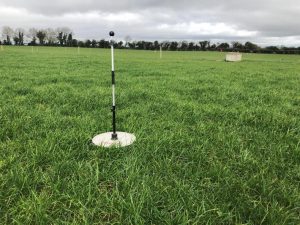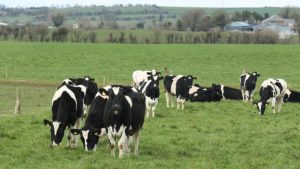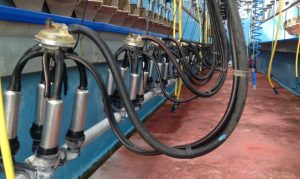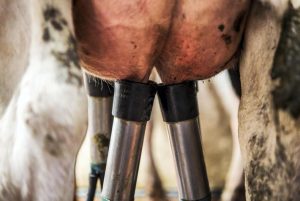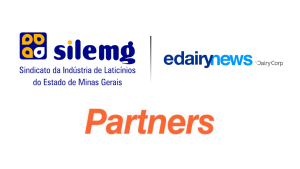
Stephen Cadogan analyses a report by the European Milk Board which found the efficiency on Irish dairy farms to be far superior to that of the 27 EU countries assessed.
Milk production in Ireland is more profitable than in many other EU member states, despite our cows having the third lowest average yield of the 27 countries.
Only in Ireland, thanks to its lower costs of production, were milk producers able to generate what the European Milk Board (EMB) deemed a fair income of €22.23 per hour, in the five years from 2015 to 2019.
According to the EMB, of which ICMSA is the only Irish member, the milk price paid to farmers did not even cover their costs of production in most countries, or on average in the EU.
The study of milk production costs in eight EU countries was based on the figures of the EU Farm Accountancy Data Network. It not only looked at the cost of farming inputs and general operating costs, but also considered how far away the farmers and their family members working on the farms were from a “decent income”.
In most countries, and on average in the EU, from 2015 to 2019, it was found the milk price did not even cover the paid costs of production (which included minimum wages or appropriate remunerationon the basis of common wage agreement), so the “decent income” was well out of reach.
Dairy farmers in Denmark and the Netherlands were found to not earn any income at all, on average, from milk production. Even when taking into account CAP payments, paid costs could not be covered in Denmark and the Netherlands. An average dairy farm in these countries generated a deficit.
The income on a French farm was found to be only €1.24 per hour, it was €1.82 per hour in Luxembourg.
In Germany and Lithuania, the incomes were €2.63 and €2.34 per hour respectively.
Belgian milk producers were left with an hourly wage of €6.58 after deducting their paid costs.
For the EU on average, the income from the milk price and CAP payments only allowed producers to earn €3.25 per hour.
The result has been an increasing number of dairy farm closures across the EU.
“From a purely economic point of view, it makes little sense for a young farmer to go into milk production”, said the EMB, and the Farm Economics and Rural Studies Office (BAL) in Germany which carried out the technical analysis of incomes.
In summary, they found Irish farmers had 3% leeway over costs (calculated at 30.17c per litre), but farmers fell short of that by 30% in Belgium (production cost 44.01c per litre), 17% in Denmark (production cost 40.02c per litre), 30% in France (production cost 47.34c per litre), 25% in Germany (production cost 43.96c per litre), 38% in Lithuania (production cost 45.41c per litre), 26% in Luxembourg (production cost 42.55c per litre), and 26% in the Netherlands (production cost 43.29c per litre).
Even in 2022, when milk prices were increased to cover EU farmers’ sky-rocketing costs for energy, fertilisers, and feed, prices did not rise above cost levels for many farmers across the 27 member states, according to the EMB.
In contrast, 2022 was a year of record earnings for Irish dairy farmers.
According to the EMB, the rate at which the EU is losing milk producers is alarming, due to chronic, rock-bottom producer prices that barely cover production costs. Furthermore, constantly recurring crises and uncertainties push farmers out of the business and prevent the next generation from entering.
In key producing countries such as France, Germany and the Netherlands, the volume of milk produced is declining in the longer term.
The EMB study offers more proof, if needed, that Ireland’s low-cost milk production system is the way to go. But can it last? Success was achieved through increased cow numbers, increased milk yield per cow, increased fat and protein percentages, increased grass growth, increased stocking rate, and additional land entering the dairy industry.
Can it continue, now that the new challenges include competitiveness, greenhouse gas emissions, water quality, biodiversity, labour, food security, and dairy-beef?
Ireland’s focus on grazed grass in the diet has been the key factor driving our competitiveness, even in the face of the severe costs inflation in 2022. It is complemented by a focus on the Economic Breeding Index (EBI) for selecting a dairy cow with suitable attributes for the low-cost grass system. But the costs explosion since 2022 means farmers must double down on cost control, and rely even less on purchased feed, fertiliser and energy.
According to Teagasc, reduced availability of workers for dairy farms is probably the biggest challenge now for dairy farmers. If dairy profits fall, the challenge may increase.
Dependence on live export of calves also poses a challenge.
But it is climate action and the drive for greater sustainability that could derail the successful Irish dairy farming model.
Already, the new maximum stocking rate of 220 kg of organic nitrogen per hectare for many derogation farmers could force them to move away from the low-cost pasture-based system in Ireland towards the continental model of forage maize and high concentrate feeding (the higher-cost systems which have left so many producers in other member states falling short of decent incomes). It may increase output per cow, where the stocking rate is restricted, but going to high-cost production removes a safety net which has served producers here well.
It may also run counter to the agriculture sector’s requirement to reduce emissions 25% by 2030. Teagasc says there is international evidence that high-input systems are more detrimental to the environment than pasture-based systems, whereas more grass and less purchased feed, fertiliser and energy fit better with reducing emissions.
There has already been good news in Teagasc’s recent calculation that the 16% reduction in use of fertiliser has reduced greenhouse gas emissions from dairy, cattle, sheep and tillage farms, continuing the trend of a 1.4% fall in agricultural emissions last year, according to the Environmental Protections Agency.
But fertiliser reductions came too late to improve water quality and prevent the stocking rate reduction for nitrates derogation farmers.
Maybe there is a middle way, and it could be the higher output but grass-based spring milk production practiced at University College Dublin’s Lyons Estate.
At a recent Irish Grain and Feed Association meeting, Professors Finbar Mulligan and Karina Pierce from UCD presented the results of their Lyons Estate research.
 Finbar Mulligan, Faculty of Veterinary Medicine, UCD is pictured speaking on condition scoring & herd health at the Southern Milling workshop on Aidan & Mary Reardons’ farm Ballinhassig, Co Cork.
Finbar Mulligan, Faculty of Veterinary Medicine, UCD is pictured speaking on condition scoring & herd health at the Southern Milling workshop on Aidan & Mary Reardons’ farm Ballinhassig, Co Cork.
The research aimed to answer three questions. Is it possible at a national level to produce the amount of milk or dairy product we need with less cows? Is it possible to maintain the same number of dairy farm businesses, with less cows and lower stocking rates per farm?
If some farms adapt the Lyons high-output grass-based model, will this help industry sustainability?
By producing Ireland’s 8,820 million litres of milk from fewer than our 1.65 million cows, can UCD’s high-output grazing herd address environmental concerns over increased cattle numbers, emissions, nitrates, and the land, buildings, and labour limitations faced by Irish dairy farmers?
The Lyons dairy herd of 58 cows is stocked at 2.3 livestock units per hectare. Its seven-year average yield of 7,327kg compares with an EU Commission average figure for Ireland in 2021 of 6,006kg. Milk solids for a 305-day lactation average 597kg at Lyons.
The average EBI in 2022 was 216 (which puts it in the top 1% nationally).
Grazed grass is the Lyons “cornerstone”, so it is measured in every paddock every Monday morning, there is annual soil sampling, reseeding 10% of the milking platform annually, and white clover also features in grassland management (it averaged 15.5% of swards in 2021, 13.6% in 2022). Grass grown per hectare was in the 11,700 to 14,000kg of dry matter range since 2016, making it one of the top performers nationally.
 Karina Pierce, Associate Professor, Dairy Production, UCD.
Karina Pierce, Associate Professor, Dairy Production, UCD.
Nitrogen per hectare varied from 159kg in 2022 (12,100kg of grass grown) to 237kg in 2017 (14,000kg grown).
How does the farm compare with a very efficient low-concentrate-feeding system of 2.7 livestock units per ha, 5,750kg of milk, 465kg of milk solids, for 500kg (dry matter) of concentrates, and 90% of the diet from grazed grass and silage? The big difference at Lyons is the 1,300kg (dry matter) of concentrates per cow, with only 78% of the diet from grazed grass and silage.
UCD’s 2033 financial simulation indicates an economic profit after labour, rent, and interest of €906 per cow, compared to €759 for the low-concentrate-feeding system. Per hectare, Lyons is also ahead (€2,113 versus €2,046). The simulation includes all labour, and the opportunity cost of land and capital.
The new derogation maximum stocking rate of 220 kg forces both systems to reduce stocking rate by about 12%.
But if this has to be accommodated without acquiring extra land, the impact on profit per ha is calculated to be higher for the lower cost system (€455 versus €409).
On the environmental sustainability front, nitrogen use efficiency is similar for both systems. But 20 cows less per 50 hectares swings the advantage to the Lyons system.
What about the sustainability of the 1,300kg (dry matter) of concentrates per cow at Lyons, based on imported ingredients? It doesn’t have to be a problem, says the Lyons researchers, because their trials indicate that Irish feed ingredients can do the job just as well. The main ingredients in their trials were rolled oats, barley, and beans, for a 12% protein concentrate, which the researchers say can sustain milk production levels for their high-output grazing cows. The lower carbon footprint for the native ingredients is significant for sustainability.
Which direction will the average Irish dairy farm go? Try to match Denmark’s yields of over 10,000kg (we could cull 40% of our cows without losing production)? Or the 7,327kg at Lyons, which is not far from the EU average (we could cull 16%). Or stick as closely as possible to our current proven low cost yields of about 6,000kg?








